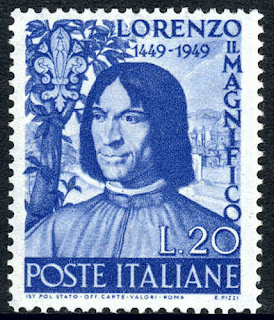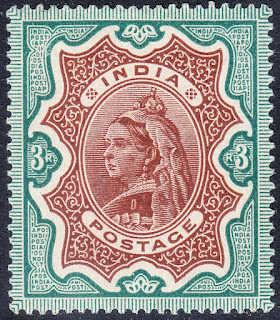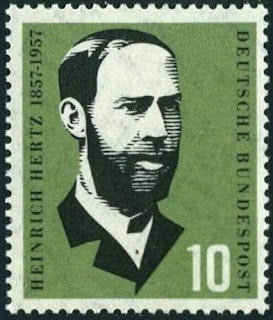1492 Born: Lorenzo de' Medici, Italian ruler (d. 1492)
Lorenzo de' Medici (1 January 1449 – 8 April 1492) was an Italian statesman, de facto ruler of the Florentine Republic and the most powerful and enthusiastic patron of Renaissance culture in Italy. Also known as Lorenzo the Magnificent (Lorenzo il Magnifico) by contemporary Florentines, he was a magnate, diplomat, politician and patron of scholars, artists and poets. As a patron, he is best known for his sponsorship of artists such as Botticelli and Michelangelo. He held the balance of power within the Italic League, an alliance of states that stabilized political conditions on the Italian peninsula for decades, and his life coincided with the mature phase of the Italian Renaissance and the Golden Age of Florence. The Peace of Lodi of 1454 that he helped maintain among the various Italian states collapsed with his death. He is buried in the Medici Chapel in Florence.
Stamps of Italy depicting Lorenzo de' Medici
1860 – The first Polish stamp is issued, replacing the Russian stamps previously in use
The first Polish stamp was issued for the Congress Kingdom on 1 January 1860 (Gregorian calendar). Because 1 January was a Sunday the stamp was not actually available until the following day. The design was similar to the contemporary Russian stamps with the arms of the Congress Kingdom in the centre. The engraving was done by the Polish Bank engraver Henryk Mejer. The drawings he used were found in the archives at St Petersburg but the name of the artist remains unknown. The stamps were printed by the government printers in Warsaw on the orders of the Congress Kingdom postal service. The letterpress machine used was invented by Izrael Abraham Staffel (1814–1884) for printing in two colours. The machine was capable of printing 1,000 sheets per hour and it had a counting device which ensured an accurate count. Apart from these facts very little more is known about the machine.
The printing was done without consultation of the Russian postal service. The regional office in St Petersburg only approved afterwards, on 4 March 1860 (Gregorian calendar). These stamps could only be used within the Congress Kingdom and to Russia. Letters to other countries had to be paid for in cash and unstamped. It is believed that some three million of these stamps were printed. When the stamps were withdrawn from use on 1 April 1865 (Gregorian calendar) a total of 208,515 stamps were destroyed; Russian stamps had to be used from that day onwards.
In 1915 the Congress Kingdom was occupied by the Central Powers.
The first Polish stamp and a stamp issued in 1960 as part of the centenary of Polish stamps
1877 – Queen Victoria of the United Kingdom is proclaimed Empress of India
Emperor or empress of India shortened to king-emperor or queen-empress, was a title used by British monarchs from 1 May 1876 (see Royal Titles Act 1876) to 22 June 1948. The image of the emperor or empress was used to signify British authority—his or her profile, for instance, appearing on currency, in government buildings, railway stations, courts, on statues etc. "God Save the King" (or, alternatively, "God Save the Queen") was the former national anthem of British India. Oaths of allegiance were made to the emperor or empress and his/her lawful successors by the governors-general, princes, governors, commissioners in India in events such as imperial durbars.
The title was abandoned on 22 June 1948, after the Indian Independence Act 1947 had made George VI king of the two new dominions of India and Pakistan. The monarchies were abolished upon the establishment of the Republic of India in 1950 and the Islamic Republic of Pakistan in 1956.
Stamps from India showing Empress Victoria and Emperor George VI
1894 Died: Heinrich Hertz, German physicist and academic (b. 1857)
Heinrich Rudolf Hertz (22 February 1857 – 1 January 1894) was a German physicist who first conclusively proved the existence of the electromagnetic waves predicted by James Clerk Maxwell's equations of electromagnetism. The unit of frequency, cycle per second, was named the "Hertz" in his honor.
In 1864 Scottish mathematical physicist James Clerk Maxwell proposed a comprehensive theory of electromagnetism, now called Maxwell's equations. Maxwell's theory predicted that coupled electric and magnetic fields could travel through space as an "electromagnetic wave". Maxwell proposed that light consisted of electromagnetic waves of short wavelength, but no one had been able to prove this, or generate or detect electromagnetic waves of other wavelengths.
During Hertz's studies in 1879 Helmholtz suggested that Hertz's doctoral dissertation be on testing Maxwell's theory. Helmholtz had also proposed the "Berlin Prize" problem that year at the Prussian Academy of Sciences for anyone who could experimentally prove an electromagnetic effect in the polarization and depolarization of insulators, something predicted by Maxwell's theory. Helmholtz was sure Hertz was the most likely candidate to win it. Not seeing any way to build an apparatus to experimentally test this, Hertz thought it was too difficult, and worked on electromagnetic induction instead. Hertz did produce an analysis of Maxwell's equations during his time at Kiel, showing they did have more validity than the then prevalent "action at a distance" theories.
After Hertz received his professorship at Karlsruhe he was experimenting with a pair of Riess spirals in the autumn of 1886 when he noticed that discharging a Leyden jar into one of these coils would produce a spark in the other coil. With an idea on how to build an apparatus, Hertz now had a way to proceed with the "Berlin Prize" problem of 1879 on proving Maxwell's theory (although the actual prize had expired uncollected in 1882). He used a Ruhmkorff coil-driven spark gap and one-meter wire pair as a radiator. Capacity spheres were present at the ends for circuit resonance adjustments. His receiver was a simple half-wave dipole antenna with a micrometer spark gap between the elements. This experiment produced and received what are now called radio waves in the very high frequency range.
Stamps from Germany depicting Heinrich Hertz
Heinrich Rudolf Hertz (22 February 1857 – 1 January 1894) was a German physicist who first conclusively proved the existence of the electromagnetic waves predicted by James Clerk Maxwell's equations of electromagnetism. The unit of frequency, cycle per second, was named the "Hertz" in his honor.
In 1864 Scottish mathematical physicist James Clerk Maxwell proposed a comprehensive theory of electromagnetism, now called Maxwell's equations. Maxwell's theory predicted that coupled electric and magnetic fields could travel through space as an "electromagnetic wave". Maxwell proposed that light consisted of electromagnetic waves of short wavelength, but no one had been able to prove this, or generate or detect electromagnetic waves of other wavelengths.
During Hertz's studies in 1879 Helmholtz suggested that Hertz's doctoral dissertation be on testing Maxwell's theory. Helmholtz had also proposed the "Berlin Prize" problem that year at the Prussian Academy of Sciences for anyone who could experimentally prove an electromagnetic effect in the polarization and depolarization of insulators, something predicted by Maxwell's theory. Helmholtz was sure Hertz was the most likely candidate to win it. Not seeing any way to build an apparatus to experimentally test this, Hertz thought it was too difficult, and worked on electromagnetic induction instead. Hertz did produce an analysis of Maxwell's equations during his time at Kiel, showing they did have more validity than the then prevalent "action at a distance" theories.
After Hertz received his professorship at Karlsruhe he was experimenting with a pair of Riess spirals in the autumn of 1886 when he noticed that discharging a Leyden jar into one of these coils would produce a spark in the other coil. With an idea on how to build an apparatus, Hertz now had a way to proceed with the "Berlin Prize" problem of 1879 on proving Maxwell's theory (although the actual prize had expired uncollected in 1882). He used a Ruhmkorff coil-driven spark gap and one-meter wire pair as a radiator. Capacity spheres were present at the ends for circuit resonance adjustments. His receiver was a simple half-wave dipole antenna with a micrometer spark gap between the elements. This experiment produced and received what are now called radio waves in the very high frequency range.
Stamps from Germany depicting Heinrich Hertz










No comments:
Post a Comment